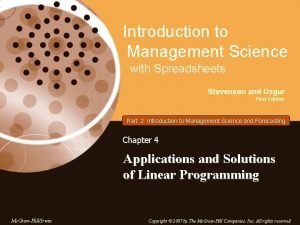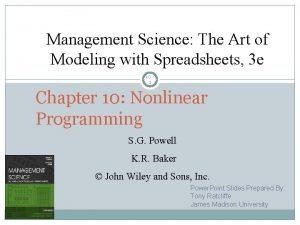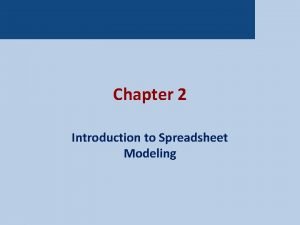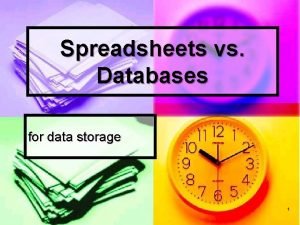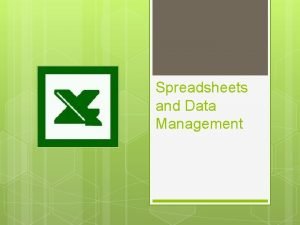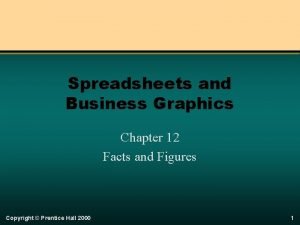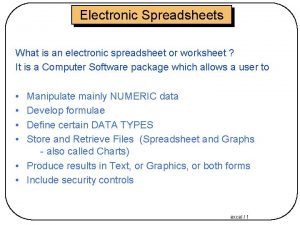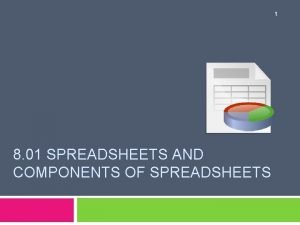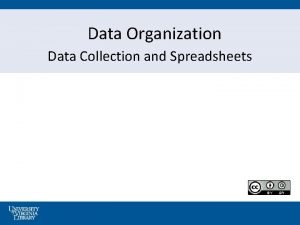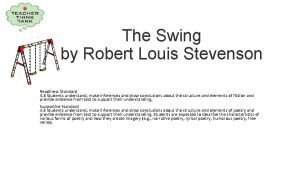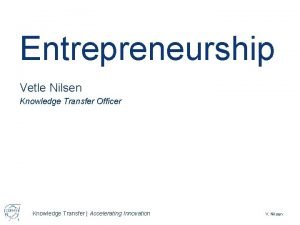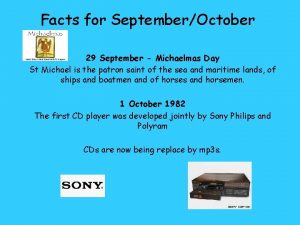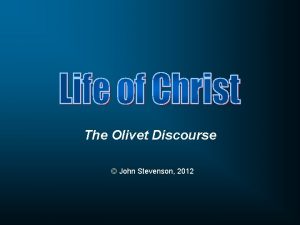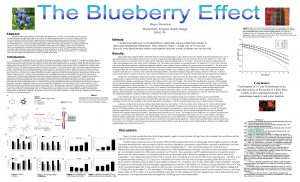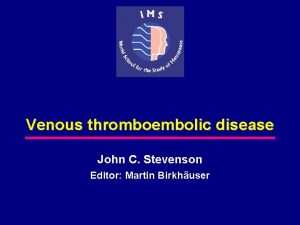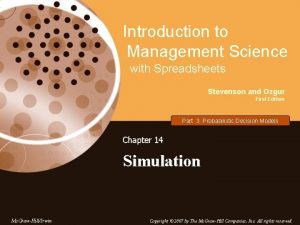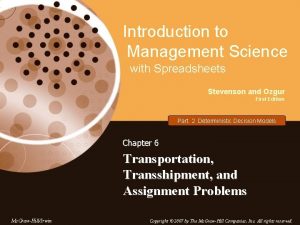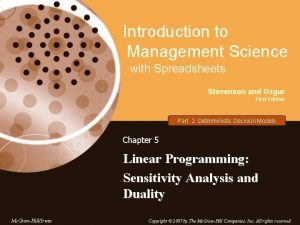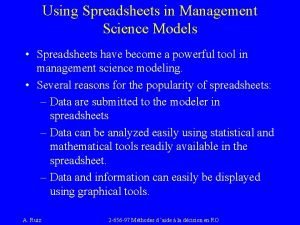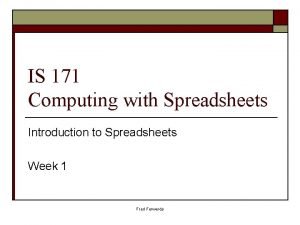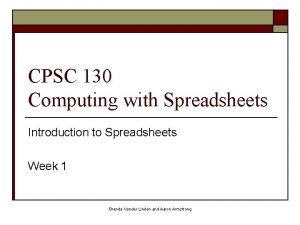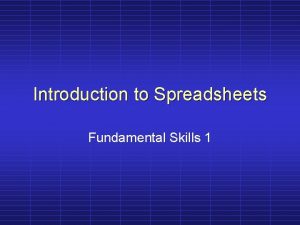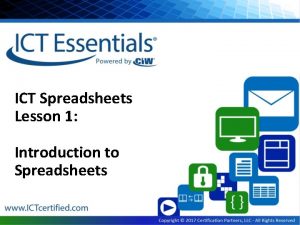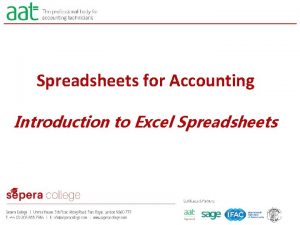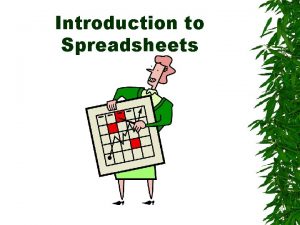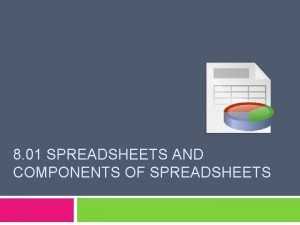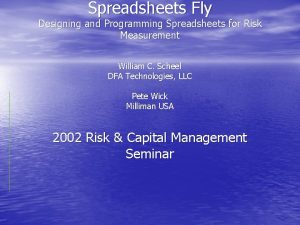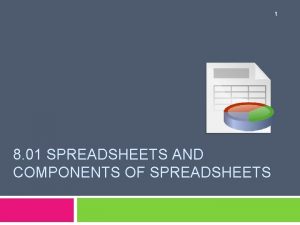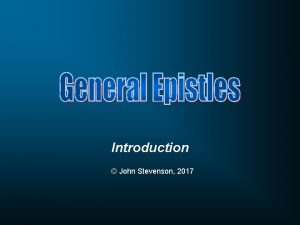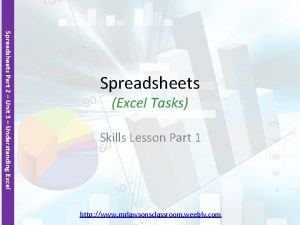Introduction to Management Science with Spreadsheets Stevenson and





































- Slides: 37

Introduction to Management Science with Spreadsheets Stevenson and Ozgur First Edition Part 3 Probabilistic Decision Models Chapter 12 Markov Analysis Mc. Graw-Hill/Irwin Copyright © 2007 by The Mc. Graw-Hill Companies, Inc. All rights reserved.

Learning Objectives After completing this chapter, you should be able to: 1. Give examples of systems that may lend themselves to be analyzed by a Markov model. 2. Explain the meaning of transition probabilities. 3. Describe the kinds of system behaviors that Markov analysis pertains to. 4. Use a tree diagram to analyze system behavior. 5. Use matrix multiplication to analyze system behavior. 6. Use an algebraic method to solve for steady-state probabilities. Copyright © 2007 The Mc. Graw-Hill Companies. All rights reserved. Mc. Graw-Hill/Irwin 12– 2

Learning Objectives (cont’d) After completing this chapter, you should be able to: 7. Analyze absorbing states, namely accounts receivable, using a Markov model. 8. List the assumptions of a Markov model. 9. Use Excel to solve various problems pertaining to a Markov model. Copyright © 2007 The Mc. Graw-Hill Companies. All rights reserved. Mc. Graw-Hill/Irwin 12– 3

Characteristics of a Markov System 1. It will operate or exist for a number of periods. 2. In each period, the system can assume one of a number of states or conditions. 3. The states are both mutually exclusive and collectively exhaustive. 4. System changes between states from period to period can be described by transition probabilities, which remain constant. 5. The probability of the system being in a given state in a particular period depends only on its state in the preceding period and the transition probabilities. It is independent of all earlier periods. Copyright © 2007 The Mc. Graw-Hill Companies. All rights reserved. Mc. Graw-Hill/Irwin 12– 4

Markov Analysis: Assumptions • Markov Analysis Assumptions – The probability that an item in the system either will change from one state (e. g. , Airport A) to another or remain in its current state is a function of the transition probabilities only. – The transition probabilities remain constant. – The system is a closed one; there will be no arrivals to the system or exits from the system. Copyright © 2007 The Mc. Graw-Hill Companies. All rights reserved. Mc. Graw-Hill/Irwin 12– 5

Table 12– 1 Examples of Systems That May Be Described as Markov Copyright © 2007 The Mc. Graw-Hill Companies. All rights reserved. Mc. Graw-Hill/Irwin 12– 6

Table 12– 2 Transition Probabilities for Car Rental Example Copyright © 2007 The Mc. Graw-Hill Companies. All rights reserved. Mc. Graw-Hill/Irwin 12– 7

System Behavior • Both the long-term behavior and the short-term behavior of a system are completely determined by the system’s transition probabilities. • Short-term behavior is solely dependent on the system’s state in the current period and the transition probabilities. • The long-run proportions are referred to as the steady-state proportions, or probabilities, of the system. Copyright © 2007 The Mc. Graw-Hill Companies. All rights reserved. Mc. Graw-Hill/Irwin 12– 8

Figure 12– 1 Expected Proportion of Period 0 Rentals Returned to Airport A Copyright © 2007 The Mc. Graw-Hill Companies. All rights reserved. Mc. Graw-Hill/Irwin 12– 9

Methods of System Behavior Analysis • Tree Diagram – A visual portrayal of a system’s transitions composed of a series of branches, which represent the possible choices at each stage (period) and the conditional probabilities of each choice being selected. • Matrix Multiplication – Assumes that “current” state proportions are equal to the product of the proportions in the preceding period multiplied by the matrix of transition probabilities. – Involves the multiplication of the “current” proportions, which is referred to as a probability vector, by the transition matrix. Copyright © 2007 The Mc. Graw-Hill Companies. All rights reserved. Mc. Graw-Hill/Irwin 12– 10

Methods of System Behavior Analysis (cont’d) • Algebraic Solution – The basis for an algebraic solution is a set of equations developed from the transition matrix. – Because the states are mutually exclusive and collectively exhaustive, the sum of the state probabilities must be 1. 00, and another equation can be developedf rom this requirement. – The result is a set of equations that can be used to solve for the steady-state probabilities. Copyright © 2007 The Mc. Graw-Hill Companies. All rights reserved. Mc. Graw-Hill/Irwin 12– 11

Figure 12– 2 Tree Diagrams for the Car Rental Example for One Period Copyright © 2007 The Mc. Graw-Hill Companies. All rights reserved. Mc. Graw-Hill/Irwin 12– 12

Figure 12– 3 Two-Period Tree Diagrams for Car Rental Example Copyright © 2007 The Mc. Graw-Hill Companies. All rights reserved. Mc. Graw-Hill/Irwin 12– 13

Table 12– 3 Period-by-Period Proportions for the Rental Example, and the Steady-State Proportions Based on Matrix Multiplications Copyright © 2007 The Mc. Graw-Hill Companies. All rights reserved. Mc. Graw-Hill/Irwin 12– 14

Figure 12– 4 Development of Algebraic Equations Copyright © 2007 The Mc. Graw-Hill Companies. All rights reserved. Mc. Graw-Hill/Irwin 12– 15

Table 12– 4 Transition Probabilities for the Machine Maintenance Example Copyright © 2007 The Mc. Graw-Hill Companies. All rights reserved. Mc. Graw-Hill/Irwin 12– 16

Exhibit 12 -1 Worksheet for the Markov Analysis of the Machine Maintenance Problem Copyright © 2007 The Mc. Graw-Hill Companies. All rights reserved. Mc. Graw-Hill/Irwin 12– 17

Figure 12– 5 Decision Tree Representation of the Machine Maintenance Problem: Initial State = Operation Copyright © 2007 The Mc. Graw-Hill Companies. All rights reserved. Mc. Graw-Hill/Irwin 12– 18

Figure 12– 6 Decision Tree Representation of the Machine Maintenance Problem Initial State = Broken Copyright © 2007 The Mc. Graw-Hill Companies. All rights reserved. Mc. Graw-Hill/Irwin 12– 19

Exhibit 12 -2 Solver Parameters Specification Screen of the Machine Maintenance Problem Copyright © 2007 The Mc. Graw-Hill Companies. All rights reserved. Mc. Graw-Hill/Irwin 12– 20

Table 12– 5 Transition Matrix for Examples 12 -5, 12 -6, and 12 -7 Copyright © 2007 The Mc. Graw-Hill Companies. All rights reserved. Mc. Graw-Hill/Irwin 12– 21

Figure 12– 7 Tree Diagram for Example 12 -5, Starting from X (Initial State = X) Copyright © 2007 The Mc. Graw-Hill Companies. All rights reserved. Mc. Graw-Hill/Irwin 12– 22

Figure 12– 8 Tree Diagram for Example 12 -5, Starting from Y (Initial State =Y) Copyright © 2007 The Mc. Graw-Hill Companies. All rights reserved. Mc. Graw-Hill/Irwin 12– 23

Exhibit 12– 3 Worksheet for the Markov Analysis of the Acorn University Problem Copyright © 2007 The Mc. Graw-Hill Companies. All rights reserved. Mc. Graw-Hill/Irwin 12– 24

Exhibit 12– 4 Second Worksheet for the Markov Analysis of the Acorn University Problem Copyright © 2007 The Mc. Graw-Hill Companies. All rights reserved. Mc. Graw-Hill/Irwin 12– 25

Exhibit 12– 5 Third Worksheet for the Markov Analysis and Steady-State Probabilities of the Acorn University Problem Copyright © 2007 The Mc. Graw-Hill Companies. All rights reserved. Mc. Graw-Hill/Irwin 12– 26

Exhibit 12– 6 Parameters Specification Screen for the Acorn University Problem Copyright © 2007 The Mc. Graw-Hill Companies. All rights reserved. Mc. Graw-Hill/Irwin 12– 27

Cyclical, Transient, and Absorbing Systems • Cyclical system – A system that has a tendency to move from state to state in a definite pattern or cycle. • Transient system – A system in which there is at least one state—the transient state—where once a system leaves it, the system will never return to it. • Absorbing system – A system that gravitates to one or more states—once a member of a system enters an absorbing state, it becomes trapped and can never exit that state. Copyright © 2007 The Mc. Graw-Hill Companies. All rights reserved. Mc. Graw-Hill/Irwin 12– 28

Table 12– 6 An Example of a Cyclical System Table 12– 7 An Example of System with a Transient State Table 12– 8 An Example of a System with Absorbing States Copyright © 2007 The Mc. Graw-Hill Companies. All rights reserved. Mc. Graw-Hill/Irwin 12– 29

Figure 12– 9 Probability Transition Diagrams for the Transition Matrices Given in Tables 12 -6, 12 -7, and 12 -8 Copyright © 2007 The Mc. Graw-Hill Companies. All rights reserved. Mc. Graw-Hill/Irwin 12– 30

Exhibit 12– 7 Excel Worksheet for Example 12 -10: The Acorn Hospital Absorbing State Problem Copyright © 2007 The Mc. Graw-Hill Companies. All rights reserved. Mc. Graw-Hill/Irwin 12– 31

Table 12– 9 Answers to Example 12 -10, Part 1 a through f Copyright © 2007 The Mc. Graw-Hill Companies. All rights reserved. Mc. Graw-Hill/Irwin 12– 32

Exhibit 12– 8 Worksheet for The Markov Analysis of Solved Problem 4 Copyright © 2007 The Mc. Graw-Hill Companies. All rights reserved. Mc. Graw-Hill/Irwin 12– 33

Exhibit 12– 9 Solver Parameters Specification Screen for the Steady-State Calculations for Solved Problem 4 Copyright © 2007 The Mc. Graw-Hill Companies. All rights reserved. Mc. Graw-Hill/Irwin 12– 34

Exhibit 12– 10 Worksheet for the Steady-State Calculations of Solved Problem 5 Copyright © 2007 The Mc. Graw-Hill Companies. All rights reserved. Mc. Graw-Hill/Irwin 12– 35

Exhibit 12– 11 Solver Parameters Specification Screen for the Steady-State Calculations for Solved Problem 5 Copyright © 2007 The Mc. Graw-Hill Companies. All rights reserved. Mc. Graw-Hill/Irwin 12– 36

Exhibit 12– 12 Excel Worksheet for Solved Problem 6: Accounts Receivable —Absorbing State Problem Copyright © 2007 The Mc. Graw-Hill Companies. All rights reserved. Mc. Graw-Hill/Irwin 12– 37
 Introduction to management science with spreadsheets
Introduction to management science with spreadsheets Management science the art of modeling with spreadsheets
Management science the art of modeling with spreadsheets Introduction to spreadsheets and models
Introduction to spreadsheets and models Data storage
Data storage Spreadsheets
Spreadsheets Facts about spreadsheets
Facts about spreadsheets Concept of electronic spreadsheet
Concept of electronic spreadsheet Components of spreadsheets
Components of spreadsheets A collection of spreadsheets
A collection of spreadsheets Science fusion online
Science fusion online Maths is my favourite subject
Maths is my favourite subject Stevenson and black 2007 inclusion spectrum
Stevenson and black 2007 inclusion spectrum Zechariah stevenson update
Zechariah stevenson update Zechariah 4:8
Zechariah 4:8 Robert louis stevenson victorian era
Robert louis stevenson victorian era Till i can see so wide
Till i can see so wide Cuadrante de stevenson
Cuadrante de stevenson Tort and contract difference
Tort and contract difference Howard h stevenson
Howard h stevenson Donoghue v stevenson case summary
Donoghue v stevenson case summary Donoghue v stevenson case summary
Donoghue v stevenson case summary Zechariah stevenson
Zechariah stevenson Zechariah stevenson
Zechariah stevenson Zechariah stevenson sentenced
Zechariah stevenson sentenced Building a life howard stevenson
Building a life howard stevenson Ilona stevenson
Ilona stevenson Matthew 24 35
Matthew 24 35 Valerie stevenson
Valerie stevenson Dr john stevenson
Dr john stevenson Peter stevenson compassion in world farming
Peter stevenson compassion in world farming What is the difference between weather and climate
What is the difference between weather and climate Maeve stevenson
Maeve stevenson Scope moho
Scope moho Maeve stevenson
Maeve stevenson Rowland v stevenson
Rowland v stevenson Dr jon stevenson
Dr jon stevenson Jeremy stevenson formulatrix
Jeremy stevenson formulatrix John stevenson syndrome
John stevenson syndrome
